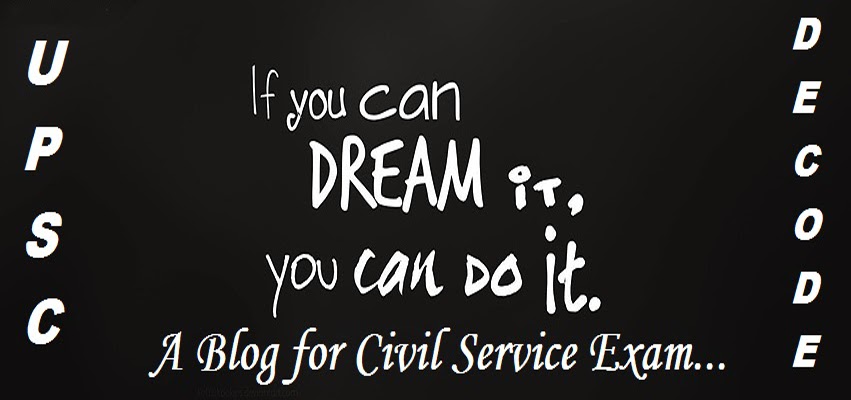The Lokpal legislation's(The Lokpal and Lokayuktas Bill, 2011) journey of over four decades ended on 18th Dec 2013 with its passage by Lok Sabha. This is welcome. After a tortuous journey, its last phase was speeded up considerably when people had almost given up hope. Praise is due to Congress, BJP as well as Anna Hazare for facilitating legislation that's an important step in the fight against corruption in public life. To be more effective, it needs to be complemented by other legislation such as one protecting whistleblowers, and enhanced investigative and prosecution skills.
While we should certainly celebrate the passage of the Lokpal Bill, its eventual impact will be contingent on ground level implementation. India's legislative history has seen many laws grand in ambition, but their impact on society has been poor. A law can never offset the inability to get things done and this is where the state has repeatedly tripped up.
1. Lokayuktas: The new bill mandates states to set up Lokayuktas within 365 days. States can determine the type.
Under the old bill, law was applicable to states only if they give consent. Under old bill, the central government had power to appoint state Lokayuktas; the new bill gives this power to the states.
2. Constitution of Lokpal: The Lokpal will consist of a chairperson and a maximum of eight members, of which 50% shall be judicial members. 50% members of Lokpal shall be from among SCs, STs, OBCs, minorities and women.
In the old bill, the chairperson was to be the Chief Justice of India or a present or former judge of the Supreme Court or a non-judicial member with specified qualifications (chief justice or a judge of a high court).
3. Selection of Lokpal: The selection committee will have prime minister, Lok Sabha speaker, leader of the opposition in the Lok Sabha and the Chief Justice of India. A fifth member of the selection committee for selection of Lokpal under the category of "eminent jurist" may be nominated by the President on the basis of recommendation of the first four members of the selection committee.
Under the old bill, President could select the fifth person.
4. Religious bodies and trust: The new bill includes societies and trusts that collect public money, receive funding from foreign sources and have an income level above a certain threshold. It excludes bodies creating endowments for or performing religious or charitable functions.
The old bill expanded definition of public servant by bringing societies and trusts and organisations which receive foreign donations (over Rs.10 lakh a year) under Lokpal.
5. Prosecution: In the new bill, before taking a decision on filing a chargesheet in a case upon consideration of the investigation report, the Lokpal may authorise its own prosecution wing or the investigating agency concerned to initiate prosecution in special courts.
Under the old bill, such power was only with the prosecution wing of the Lokpal.
6. Central Bureau of Investigation (CBI): For independence of the CBI, in the new bill a directorate of prosecution will be formed. Appointment of the director of prosecution will be on the recommendation of the Central Vigilance Commissioner.
Transfer of officers of CBI investigating cases referred by Lokpal will be only with the approval of Lokpal who will also have superintendence over CBI in relation to Lokpal referred cases.
7. Hearing: The new bill says a government servant will get a hearing before a decision is taken by the Lokpal.
8. Prime minister: The prime minister will be under the purview of the Lokpal with subject matter exclusions and specific process for handling complaints against the prime minister.
9. Investigation: Inquiry has to be completed within 60 days and investigation to be completed within six months. Lokpal shall order an investigation only after hearing the public servant.
Inquiry against the prime minister has to be held in-camera and approved by two-thirds of the full bench of the Lokpal.
10. Penalty: False and frivolous complaints - imprisonment up to one year and a fine of up to Rs.1 lakh. Public servants - imprisonment up to seven years. Criminal misconduct and habitually abetting corruption - jail term up to 10 years.
Funding: All expenses to be charged to the Consolidated Fund of India (Funds available to the Lokpal will not be dependent on the annual budget voted by Lok Sabha)
10
points of the Lokpal Bill which make it stronger.
* Lokpal will have
power of superintendence and direction over any central investigation agency including
CBI for cases referred to them by the ombudsman.
* A high-powered
committee chaired by the PM will recommend selection of CBI director. The collegium
will comprise PM, leader of opposition in Lok Sabha and Chief Justice of India
PM has been brought under purview of the Lokpal, so also central ministers and
senior officials.
* Directorate of
prosecution will be under overall control of CBI director. At present, it comes
under law ministry.
* Appointment of
director of prosecution to be based on recommendation of the Central Vigilance Commission.
* Director of
prosecution will also have a fixed tenure of two years like CBI chief.
* Transfer of CBI
officers investigating cases referred by Lokpal with the approval of watchdog.
* Bill incorporates
provisions for attachment and confiscation of property acquired by corrupt
means, even while prosecution is pending.
* Bill lays down
clear timelines for preliminary enquiry and investigation and trial. Provides
for special courts Public servants will not present their view before
preliminary enquiry if the case requires 'element of surprise' like raids and
searches.
* Bill grants powers
to Lokpal to sanction prosecution against public servants.
* CBI may appoint a panel of advocates
with approval of Lokpal, CBI will not have to depend on govt advocates.
Conclusion:
A high-minded feel-good legislation isn't going to
transform dystopia into utopia. In the tributes to people's power that have followed
the passage of Lokpal, remember legislation is just the beginning.
